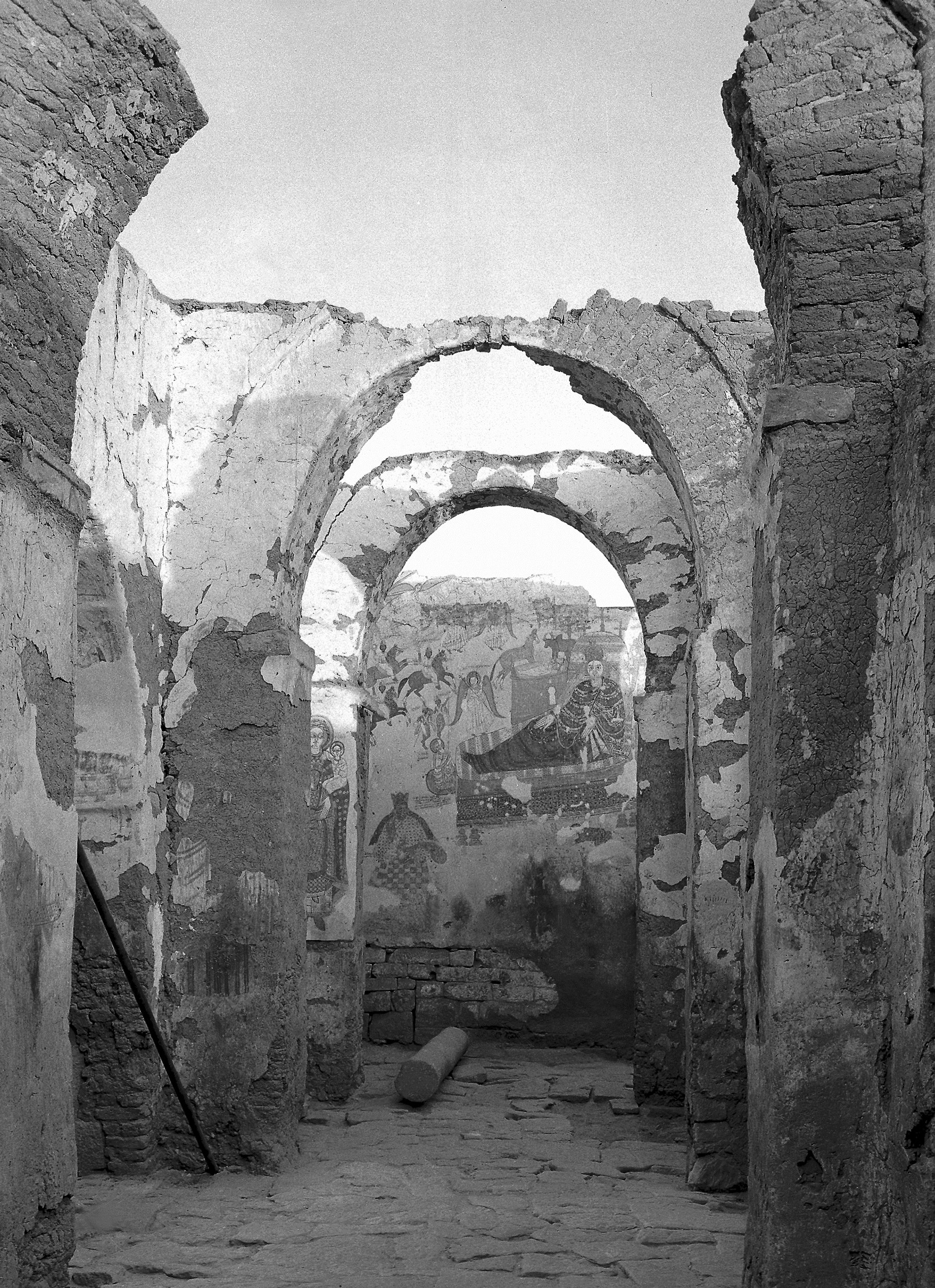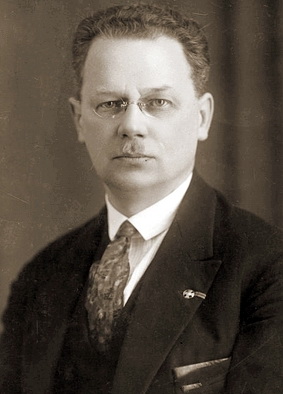|
Faras Gallery At The National Museum In Warsaw
The Professor Kazimierz Michałowski Faras Gallery at the National Museum in Warsaw is a permanent gallery at the National Museum in Warsaw, presenting Nubian early Christian art. The Gallery features a unique collection of wall paintings and architectural elements from the Faras Cathedral, discovered by an archeological expedition led by Professor Kazimierz Michałowski. History of the gallery Excavations at Faras Most of the artworks shown in the Faras Gallery found their way there thanks to the archaeologists participating in the international effort to save the remains of old Nile basin cultures, known as the Nubian Campaign. The Nubian Campaign was initiated by UNESCO in 1959 (official inauguration took place on March 8, 1960). Excavations in Faras, which lasted between 1961 and 1964 were directed by Professor Kazimierz Michałowski on behalf of the Polish Centre of Mediterranean Archaeology of the University of Warsaw (then Polish Centre of Mediterranean Archaeology of the ... [...More Info...] [...Related Items...] OR: [Wikipedia] [Google] [Baidu] |
Aleje Jerozolimskie
Jerusalem Avenue ( pl, Aleje Jerozolimskie) is one of the principal streets of the capital city of Warsaw in Poland. It runs through the City Centre along the East-West axis, linking the western borough of Wola with the bridge on the Vistula River and the borough of Praga on the other side of the river. History The name of the street comes from a small village erected in 1774 by prince and marshal August Sułkowski for the Jewish settlers in Mazovia. The name of the village was Nowa Jerozolima (''New Jerusalem''), and the road to Warsaw was named ''Aleja Jerozolimska'' (singular, as opposed to the modern Polish name, which is plural). Although the village was abandoned shortly after its foundation, and most of the Jews eventually moved to the city itself, the name stuck and has been used ever since. It was there that the first railway station in Warsaw was built. In the late 19th century, the easternmost part of it became one of the most representative—and the most expensi ... [...More Info...] [...Related Items...] OR: [Wikipedia] [Google] [Baidu] |
Japanese Tissue
Japanese tissue is a thin, strong paper made from vegetable fibers. Japanese tissue may be made from one of three plants, the ''kōzo'' plant (''Broussonetia papyrifera'', paper mulberry tree), the mitsumata (''Edgeworthia chrysantha'') shrub and the gampi tree (''Diplomorpha sikokiana''). The long, strong fibers of the kōzo plant produce very strong, dimensionally stable papers, and are the most commonly used fibers in the making of Japanese paper (washi). Tissue made from ''kōzo'', or ''kōzogami'' (楮紙), comes in varying thicknesses and colors, and is an ideal paper to use in the mending of books. The majority of mending tissues are made from ''kōzo'' fibers, though mitsumata and gampi papers also are used. Japanese tissue is also an ideal material for kites and airplanes models covering. Forms The kōzo plant is used in the manufacture of the following papers: The gampi plant is used in the manufacture of the following papers: The mitsumata plant is used in the m ... [...More Info...] [...Related Items...] OR: [Wikipedia] [Google] [Baidu] |
Blok Fryzu Z Absydy I Katedry, Warsztat Nubijsk
Blok may refer to: *Blok (surname) *Blok (comics), the fictional superhero of the DC Comics universe *Blok M, downtown shopping area in Jakarta, Indonesia *Mega Bloks, plastic building blocks produced by Mega Bloks, Incorporated *The Vlaams Blok (Dutch: ''Vlaams Blok''), former Flemish right-wing nationalist political party *Blok (Pendragon series), the all-powerful company in the book The Quillan Games by D. J. MacHale See also *Block (other) Block or blocked may refer to: Arts, entertainment and media Broadcasting * Block programming, the result of a programming strategy in broadcasting * W242BX, a radio station licensed to Greenville, South Carolina, United States known as ''96.3 ... * Bloch (other) {{disambig ... [...More Info...] [...Related Items...] OR: [Wikipedia] [Google] [Baidu] |
Ministry Of Culture And National Heritage (Poland)
Ministry of Culture and National Heritage of the Republic of Poland ( pl, Ministerstwo Kultury i Dziedzictwa Narodowego) is a governmental administration office concerned with various aspects of Polish culture. It was formed on 31 October 2005, from transformation of ''Ministry of Culture of the Republic of Poland''. The ministry can trace its history back to 1918 when the Ministry of Art and Culture was established. It was suppressed in 1922 due to rationalization of public expense and structural reform of the government. It was reestablished within the temporary communist government in 1944 and has existed continuously henceforth until the merger with the Ministry of Sport in 2021. List of ministers References External links Official website of Ministry of Culture and National Heritage Poland Poland, officially the Republic of Poland, is a country in Central Europe. It is divided into 16 administrative provinces called voivodeships, covering an area of ... [...More Info...] [...Related Items...] OR: [Wikipedia] [Google] [Baidu] |
Nubiology
Nubiology is the designation given to the primarily archaeological science that specialises in the scientific and historical study of Ancient Nubia and its antiquities. It is sometimes also applied to scientists who study other ancient lands and cultures south of Ancient Egypt. The term was coined by Kazimierz Michałowski Kazimierz Józef Marian Michałowski (born December 14, 1901 in Tarnopol – January 1, 1981 in Warsaw) was a Polish archaeologist and Egyptologist, art historian, member of the Polish Academy of Sciences, professor ordinarius of the Univer .... External linksWebsite Study of Nubiology at the Polish Academy of Sciences History of Nubia Area studies by ancient history Archaeology of Egypt Archaeology of Sudan {{Archaeology ... [...More Info...] [...Related Items...] OR: [Wikipedia] [Google] [Baidu] |
Nile
The Nile, , Bohairic , lg, Kiira , Nobiin language, Nobiin: Áman Dawū is a major north-flowing river in northeastern Africa. It flows into the Mediterranean Sea. The Nile is the longest river in Africa and has historically been considered the List of rivers by length, longest river in the world, though this has been contested by research suggesting that the Amazon River is slightly longer.Amazon Longer Than Nile River, Scientists Say Of the world's major rivers, the Nile is one of the smallest, as measured by annual flow in cubic metres of water. About long, its drainage basin covers eleven countries: the Democratic Republic of the Congo, Tanzania, Burundi, Rwanda, Uganda, Kenya, Ethiopia, Erit ... [...More Info...] [...Related Items...] OR: [Wikipedia] [Google] [Baidu] |
Banganarti
Banganarti ( ar, بنقنارتي) is a small village in Sudan, about half way between the third and fourth cataract of the Nile. It is situated from Old Dongola, the capital of Makuria. Banganarti was an important Christian pilgrim center; the remains of a substantial medieval church are near the village (18.166736,30.784785). Excavations Polish archaeological research Polish archaeologists have worked at the site since 1998. Banganarti was included in the field prospection carried out as part of the Southern Dongola Reach Survey, directed by Bogdan Żurawski, after which started the excavations (in 2001). Earlier, from 1984, the site was studied by an expedition from the Royal Ontario Museum. The Polish expedition is organized by the Polish Centre of Mediterranean Archaeology University of Warsaw, the Institute of Mediterranean and Oriental Cultures of the Polish Academy of Sciences, and (since 2016) the Institute of Archaeology, University of Rzeszów. It conducts archaeo ... [...More Info...] [...Related Items...] OR: [Wikipedia] [Google] [Baidu] |
Makuria
Makuria (Old Nubian: , ''Dotawo''; gr, Μακουρία, Makouria; ar, المقرة, al-Muqurra) was a Nubian kingdom located in what is today Northern Sudan and Southern Egypt. Makuria originally covered the area along the Nile River from the Third Cataract to somewhere south of Abu Hamad as well as parts of northern Kordofan. Its capital was Dongola (Old Nubian: '), and the kingdom is sometimes known by the name of its capital. By the end of the 6th century, it had converted to Christianity, but in the 7th century, Egypt was conquered by the Islamic armies. In 651 an Arab army invaded, but it was repulsed and a treaty known as the ''Baqt'' was signed creating a relative peace between the two sides that lasted until the 13th century. Makuria expanded by annexing its northern neighbour Nobatia at some point in the seventh century, while also maintaining close dynastic ties with the kingdom of Alodia to the south. The period from the 9th to 11th century saw the peak of Makuri ... [...More Info...] [...Related Items...] OR: [Wikipedia] [Google] [Baidu] |
Old Dongola
Old Dongola (Old Nubian: ⲧⲩⲛⲅⲩⲗ, ''Tungul''; ar, دنقلا العجوز, ''Dunqulā al-ʿAjūz'') is a deserted town in what is now Northern State, Sudan, located on the east bank of the Nile opposite the Wadi Howar. An important city in medieval Nubia, and the departure point for caravans west to Darfur and Kordofan, from the fourth to the fourteenth century Old Dongola was the capital of the Makurian state. A Polish archaeological team has been excavating the town since 1964. The urban center of the population moved downstream 80 km (50 miles) to the opposite side of the Nile during the nineteenth century, becoming the modern Dongola. History Foundation and heyday The archaeological site encompassing Old Dongola has about 200 ha. Its southern part features a citadel and urban buildings, while in the north, splendid suburban residences have been uncovered. There are also cemeteries associated with subsequent phases of the town's functioning, including I ... [...More Info...] [...Related Items...] OR: [Wikipedia] [Google] [Baidu] |
Excavations At Faras 010
In archaeology, excavation is the exposure, processing and recording of archaeological remains. An excavation site or "dig" is the area being studied. These locations range from one to several areas at a time during a project and can be conducted over a few weeks to several years. Excavation involves the recovery of several types of data from a site. This data includes artifacts (portable objects made or modified by humans), features (non-portable modifications to the site itself such as post molds, burials, and hearths), ecofacts (evidence of human activity through organic remains such as animal bones, pollen, or charcoal), and archaeological context (relationships among the other types of data).Kelly&Thomas (2011). ''Archaeology: down to earth'' (4th ed.). Belmont, Calif.: Wadsworth, Cengage Learning. Before excavating, the presence or absence of archaeological remains can often be suggested by, non-intrusive remote sensing, such as ground-penetrating radar. Basic informat ... [...More Info...] [...Related Items...] OR: [Wikipedia] [Google] [Baidu] |
Faras - Restoration In MNW-01
Faras (formerly grc, Παχώρας, ''Pakhôras''; la, Pachoras; Old Nubian: Ⲡⲁⲭⲱⲣⲁⲥ, ''Pakhoras'') was a major city in Lower Nubia. The site of the city, on the border between modern Egypt and Sudan at Wadi Halfa Salient, was flooded by Lake Nasser in the 1960s and is now permanently underwater. Before this flooding, extensive archaeological work was conducted by a Polish archaeological team led by professor Kazimierz Michałowski. History Dating back to the A-Group period, the town was a major centre during the Meroitic period, and was the site of a major temple. During the period of ancient Egyptian control over Nubia, Faras became an Egyptian administrative centre and, located upriver from Abu Simbel, Egyptian cultural influences were prominent. The city reached its height during the Christian period of Nubia, when Faras was the capital of the ''basiliskos'' Silko of Nobadia. When Nobatia was absorbed into Makuria, it remained the most prominent center ... [...More Info...] [...Related Items...] OR: [Wikipedia] [Google] [Baidu] |




.png)

